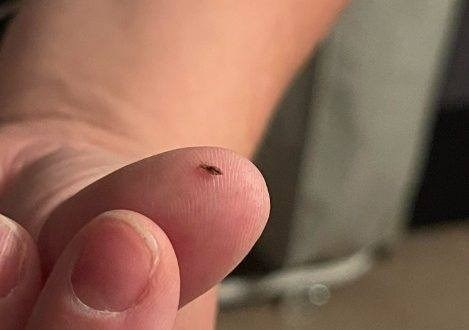ADVERTISEMENT
6. Keep Hair Clean and Tidy
Maintaining clean hair and scalp hygiene can be helpful in preventing lice infestations. While lice aren’t attracted to dirty hair, keeping hair clean and healthy reduces the possibility of lice making a home in your child’s hair. Wash and condition hair regularly, and consider using a lice-repellent shampoo for extra precaution.
7. Check for Lice in Shared Spaces
Head lice can sometimes spread through shared spaces like classrooms, daycare centers, and even family rooms. If your child is in contact with many other children, especially in group settings where head-to-head contact is common, try to minimize exposure when lice outbreaks are reported. Let your child know that it’s essential to avoid contact with others’ personal items during these times.
8. Wash Bedding, Clothes, and Toys Frequently
Head lice don’t live long off the scalp, but they can survive on bedding, clothing, and personal items. If you suspect lice are in your home, wash all bedding, clothes, hats, and any soft toys that your child uses. Wash items in hot water (at least 130°F) to kill any lice or nits that may be lurking. After washing, dry the items on high heat for at least 20 minutes. Non-washable items can be sealed in a plastic bag for two weeks to ensure any lice die off.
9. Treating Lice if They Occur
If, despite all precautions, head lice make an appearance, it’s important to act quickly to treat them. Over-the-counter treatments, such as shampoos or creams that contain permethrin or pyrethrin, are effective for most cases. You may also want to use a lice comb to remove the nits from your child’s hair. Always follow the instructions on the product to ensure its effectiveness.
If over-the-counter treatments don’t work, or if you’re concerned about treating lice yourself, consider contacting a healthcare professional for alternative treatments.
Conclusion
While head lice can be a nuisance, with the right preventative measures, you can greatly reduce the chances of an infestation. Educating children on the importance of not sharing personal items, keeping hair tied back, and regularly inspecting their scalp can go a long way in protecting them from lice. If lice do occur, taking prompt action and following effective treatments will help manage the situation.
By staying proactive and vigilant, both children and adults can enjoy lice-free days and avoid the discomfort of these pesky little insects.
ADVERTISEMENT
ADVERTISEMENT
